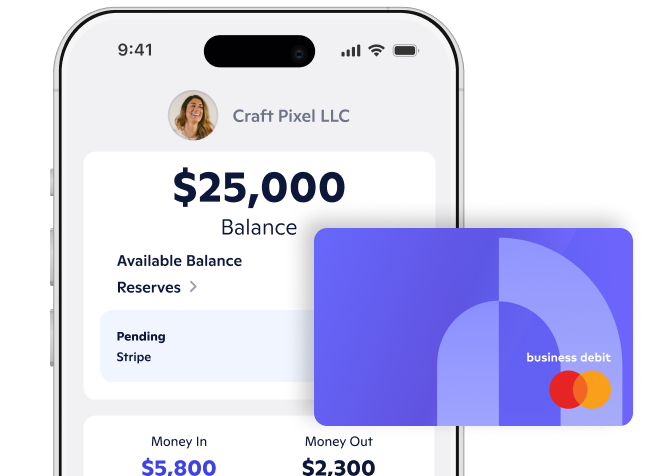
ou've been managing your solo business efficiently and keeping everything going yourself. And though you've managed to push for growth, your to-do list is getting too long for one person.
To help you learn how to hire your first employee, we've laid out a checklist you can follow. Use it to help you make the right decisions for your business—all while staying compliant with rules and regulations.
Things to consider before hiring your first employee
Before you post a job ad, consider the costs and advantages of hiring. Here are five questions to ask yourself.
Do I have enough work to give a new employee?
If you're thinking of hiring help and it's your busy season, consider the picture during your slow months. Ask yourself when you'll need additional staff and when you'll be okay with what you have.
Do I need help growing my business?
When a small business grows, there are new tasks to attend to and ongoing tasks that suddenly require more time. Additional staff may be able to help you juggle everything.
For example, perhaps you used to be able to take time out from inventory tasks to attend to customers. Now that your company has grown, it's impossible for you to get all your admin done and still provide great service. When you can't do one without neglecting the other, you must hire someone or risk losing business.
Do I need a part-time or full-time employee?
Consider how many hours of help you need daily. For example, do you regularly have seven hours' worth of work to assign? If not, consider a part-time hire.
Do I have the budget to recruit and hire an employee?
According to the Society for Human Resource Management, hiring one employee costs an average of $4,583—and that only includes the costs leading up to onboarding.
You still have to budget for ongoing expenses such as payroll taxes, Social Security taxes, and benefits such as worker's compensation and health insurance. You'll also need to provide the employee with the necessary equipment to do their job.
Do I have the bandwidth to onboard a new employee?
State and federal laws govern all aspects of the hiring process, from advertising to benefits. That includes:
- Minimum wage requirements: Some states have special or higher standards than the federal minimum wage.
- Employee benefits: If you're a small business with fewer than 50 employees, you're not required to provide employee benefits such as Social Security and Medicare contributions. However, you may choose to provide benefits.
- Records of all hours worked and paid: You must maintain these for each employee.
Make sure you're ready for this extra record-keeping, as well as the training requirements that come with onboarding a new employee. Small businesses invest an average of 61 hours toward training each employee. If this is your first hire or if this hire reports to you, you’ll need to work their training into your schedule.
Steps to take before hiring your first employee
As a business owner hiring your first employee, you must cover the following bases.
- Obtain an Employer Identification Number (EIN). Employers need EINs to hire and pay employees, file employment tax returns, and withhold employee taxes. To secure your unique EIN, fill out IRS Form SS-4.
- Register with your state's labor department. Most employers also need state tax ID numbers to pay state employment and unemployment compensation taxes. Contact your state's labor office for the required forms and procedural information.
- Obtain insurance. In most states, all employers with one or more employees must have workers' compensation coverage. Check your state's specifics to ensure compliance. You may also wish to have liability insurance and other business owner policies, as employees will add to your risk.
- Set up a payroll system and tax withholdings. Create a system that will pay the correct amount to each employee for each pay period, often either weekly or biweekly. Keep records of each employee's tax, retirement, and other deductions. You might choose to hire an accountant or use a payroll service to avoid IRS penalties.
- Set up employee benefits. Although employee benefits are optional for small employers with fewer than 50 employees, an attractive benefits package can help you attract top talent. Calculate your budget for benefits and find out what businesses like yours offer their teams.
- Prepare an employment contract. Create a written contract documenting the job offer's terms and the employee's responsibilities. Include compensation and benefits, including time off.
- Write your job description and post the role. Establish your qualification requirements, including must-haves and nice-to-haves. Market employee perks and benefits to make the position enticing to candidates. Then, post to a few general job boards such as Indeed and LinkedIn, plus some industry-specific boards if relevant.
- Screen and interview candidates. Identify the resumes that match your needs and bring candidates in for interviews. If the job doesn't require a complex skillset, aim for just one round of interviews.
- Make an offer. Ensure your offer aligns with the expectations you established in your job posting and interview process.
Steps to take after hiring your first employee
- Have your employee fill out a W-4. The IRS requires Form W-4 from each employee so you withhold the correct amount per paycheck.
- Fill out Form I-9 for each new employee. Form I-9 verifies the employee's identity and authorization to work in the U.S.
- Report your new employee to your state's new hire reporting agency. Federal law requires you to submit each new and rehired employee's basic information within 20 days of hire. Find state requirements through the Office of Child Support Enforcement.
- Set up a direct deposit. Many employees prefer payment via direct deposit. To do that, you’ll need a quality business banking provider. Novo has provided banking solutions to many small businesses and is here to help you get started. Learn more about Novo.
- Post required notices in the workplace. Some government agencies require employers to display safety regulations and certain employment laws in the workplace. Check the U.S. Department of Labor website to learn which notices your state requires.
- File IRS Form 940 each year. Form 940 reports your Federal Unemployment Act tax. These taxes provide funding for unemployment compensation.
- Comply with OSHA workplace safety standards. Read through the Occupational Safety and Health Administration's Worker Rights and Protections. Verify that your workplace is fully compliant.
- Create and distribute an employee handbook. An employee handbook establishes workplace norms and helps to create your company's culture. If you're hiring for the first time, it also enables you to standardize and share policies.
- Keep personnel records with all related documents. Personnel records provide documentation for future employment decisions, from raises to terminations. Keep all hiring documents and performance review paperwork, including any paperwork with the employee's signature. Without them, you could face litigation from an employee claiming unfair labor practices. Employment law requires you to have all of your hiring paperwork in case a dispute occurs.
First steps to your first hire
Now that you understand how to hire your first employee, you can begin the preparation process. Make sure that creating this position is the right step for you, then start gathering documents and preparing your job ad. Seek legal advice if necessary to ensure you're in compliance with government regulations.
And if you need banking and financial resources to power your growth, call Novo. We're a banking platform specifically geared toward helping solopreneurs and small business owners realize their dreams.
Your first employee is a big step toward that dream. Congratulations on taking your business this far.
Novo Platform Inc. strives to provide accurate information but cannot guarantee that this content is correct, complete, or up-to-date. This page is for informational purposes only and is not financial or legal advice nor an endorsement of any third-party products or services. All products and services are presented without warranty. Novo Platform Inc. does not provide any financial or legal advice, and you should consult your own financial, legal, or tax advisors.
Novo is a fintech, not a bank. Banking services provided by Middlesex Federal Savings, F.A.: Member FDIC.






